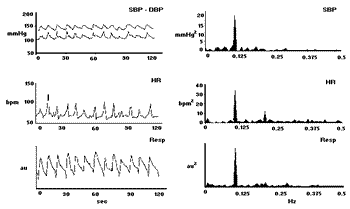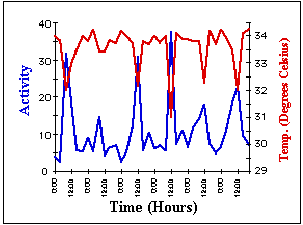Uncovering the Secrets of the Naked Mole-Rat
Scientists at The Scripps Research Institute in La Jolla, California are making the most out of the benefits of telemetry to study a little known animal called the Naked Mole-Rat (Heterocephalus glaber). The use of telemetry in research has been essential in understanding the temperature and activity cycles in this environmentally sensitive animal.
The Naked Mole-Rat is a very unique mammal. It is native to the Eastern Horn of Africa, which includes Somalia, Ethiopia, and Kenya.
H. glaber is completely fossorial and spends all of its life underground. With out light penetrating the living space or any ability to detect objects, it uses its few hairs (vibrisae) surrounding its nose for 'seeing.' Their oversized front teeth help dig through the dried clay soil to create a network of tunnels and chambers in which they live. They also dig, randomly, in order to find food - roots and tubers from above ground plants. As they are found mostly in deserts, the Naked Mole-Rat has adapted to survive by extracting its liquid needs solely from plants.

In addition to the unique housing conditions, the Naked Mole-Rat is socially organized unlike other mammals. It is eusocial and lives in groups (colonies) that are comprised of one breeding female (Queen), one to three breeding males, and hormonally-suppressed, non-reproducing workers. Each colony acts similar to a hive of bees. Responsibilities of workers are assigned based on the hierarchical ranking of the animal. The social structure is fragile and the loss of one animal can change the duties of many.
The burrow temperature and humidity is very stable because there is very little air exchange with the surface. With the burrow air remaining between 30 and 32 degrees C year round, Naked Mole-Rats have very little need to control their body temperature. It is for this reason that researchers believe this animal has become poikilothermic - unable to thermoregulate. This unique feature is the experimental basis for the graduate work conducted by Nicole Herold in the laboratory of Dr. Steven Henriksen.
The Naked Mole-Rat is being studied by this group for two reasons. First, very little physiological research has been completed on this animal leaving many questions yet to be answered. Telemetry is an ideal method to begin unraveling the mystery of this specie. Second, and more importantly, the naked mole-rat is an ideal model for studying the affects on sleep due to temperature.
Sleep is known to be influenced by temperature, as well as environmental timing cues or zeitgebers. Closely related to the onset of sleep and wakefulness is the endogenous circadian temperature cycle. By studying the sleep of an animal such as the Naked Mole-Rat, which should follow closely the temperature of its environment and has no zeitgebers, the relationship between sleep and temperature mechanisms can be more clearly defined.
Miss Herold took the challenge of establishing a novel surgical protocol in order to implant either the TAETA-F20 or TATA-F20. Once the animals recovered and were reintroduced to the colony, a process taking between two and four weeks, temperature and activity, and sometimes EEG, measurements were taken every ten minutes for six continuous days. This is the first time that temperature has been studied in the Naked Mole-Rat with out the effects of handling and while the animal remained in its colony environment undisturbed. The rhythmicity of temperature and activity was also studied for the first time during telemetric recording. EEG had never before been recorded either.

Temperature and Activity Rhythms in the Naked Mole-Rat. This figure shows the synchronized dip in temperature and increase in activity. Measurements were averaged for a single animal every 4 hours for 6 consecutive days.
To truly determine whether the Naked Mole-Rat was poikilothermic and uninfluenced by timing cues, the animal was studied in the following conditions:
| Housing | Temperature | Lighting |
| Habitat | Normal | 12:12* |
| Isolation | Normal | 12:12 |
| Habitat | Normal | 24^ |
| Isolation | Normal | 24 |
| Isolation | Low | 12:12 |
| Isolation | High | 12:12 |
*12:12 refers to 12 hours red light, 12 Hours darkness ^24 refers to 24 Hours darkness
The results were unexpected and similar in all conditions. The Naked Mole-Rat has a distinct temperature and activity rhythm that is not coupled to environmental conditions. More surprisingly, there is an inverse relationship between the two measures. When temperature is at its lowest (nadir), activity is at its highest and vice versa. No ramping can be seen in preption for this dichotomy.
The meaning behind the Naked Mole-Rat puzzle has not been revealed. However, telemetry no doubt will continue to be a driving force in the search for answers.